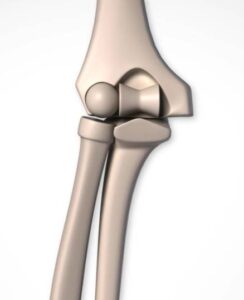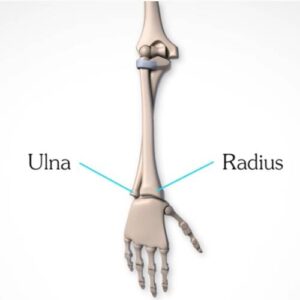Clavicle Fracture: Symptoms, Causes and Recovery/Rehabilitation
Most clavicle fractures will heal without an operation. They quite often managed in either a sling or brace to try to help support the weight of the arm to prevent the fracture from displacing and this also provides pain relief.
You have sustained a fracture to the middle portion of your collarbone also known as the clavicle.

As the above picture demonstrates that there is a common injury and it will heal itself naturally with the passage of time this normally, takes approximately six weeks but pain and swelling can be ongoing for three to six months because of the nature of the injury. There may always be a lump in this area it should however not be painful and have no long-term effects.

You will have been provided with a sling. This should be worn for the first two weeks. Only it should be removed regularly to perform the exercises.
You may need to take painkillers or anti-inflammatories, especially in the early stages. Some of these injuries require a follow-up appointment with an upper limb specialist. Certain injury types can lead to delayed healing.
- One of the things that can slow down healing is smoking. If you do smoking it would be advisable to stop at least for the duration of the healing process.
- You can start driving again when you can comfortably control the car. And obviously, you can’t drive if you’re still in the sling.
- You can return to work when you feel comfortable and sports can be resumed at six weeks. Keep in mind though that pain and swelling can be ongoing. When you start impact activities.
Symptoms
- Pain that increases with shoulder movement
- Swelling
- Tenderness
- Bruising
Causes
- Falls- Such as falling onto your shoulder or onto your outstretched hand.
- Sports injuries- Such as a direct blow to your shoulder on the field, rink, or court.
- Vehicle trauma- From a car, motorcycle, or bike accident.
Initial Exercises to be taken as part of your rehabilitation:
It’s really important in the first stage of your rehabilitation to remove your sling to do the following exercises three to four times a day.
- Hand and Wrist Exercise: You can move your wrist in upwards and downwards position getting a good stretch of that joint. You can use a pair of socks that you make a ball and hold and squeeze to add some resistance to this exercise. This is good to help to reduce the swelling.
- Elbow Exercise: You need to practice straightening your elbow and bending it towards your mouth. Elbow also works in rotation and moves your hand from facing palm up to palm down.
- Rollback Shoulder Exercise: You should bring your shoulders back so that, you get a stretch across the front of your chest. You should hold this position for approximately 30 seconds and repeat this four to five times a day.
- Pendulum exercises: Hold on to a firm surface bring your feet into a step starts position and gently lean forward letting your arm come forward with it. You can then move your arm in forwarding and backward momentum. Just like the pendulum from a clock and also do with sideways movement, clockwise rotation. Do this exercise for a minute or a minute and a half again four to five times a day.
These exercises are only to be undertaken after 3 weeks:
The next stage of your rehabilitation is about gently starting to move your shoulder. This exercise is known as an active-assisted range of movement.
The first movement direction is to hold on to your hand with your good arm and gently guide it up in the air. You should repeat this 10 times nice and slowly and thinking about the quality of the movement.
The second movement is a rotational way for this get a stick and place your arm firmly with an overhand grip onto the stick. Use your arm in a sideways outer movement. Keep your elbow close by your side.
The exercise you should do about 10 repetitions on both exercises about 4 to 5 times a day.
These exercises are only to be undertaken after 6 weeks:
The third stage of rehabilitation is about regaining the range of movement and strength in your shoulder.
The first exercise is bringing your arms straight up in front of you as far as you can do comfortably. It’s important to focus on your posture while doing it.
The second exercise is to your thumb outwards and do a similar movement but in a big arc. Once again just go as far as you feel able to and each day hopefully this will improve a little bit.
We recommend you to take your doctor’s advice for proper guidance.
Do share this blog with your friends and family!


































































